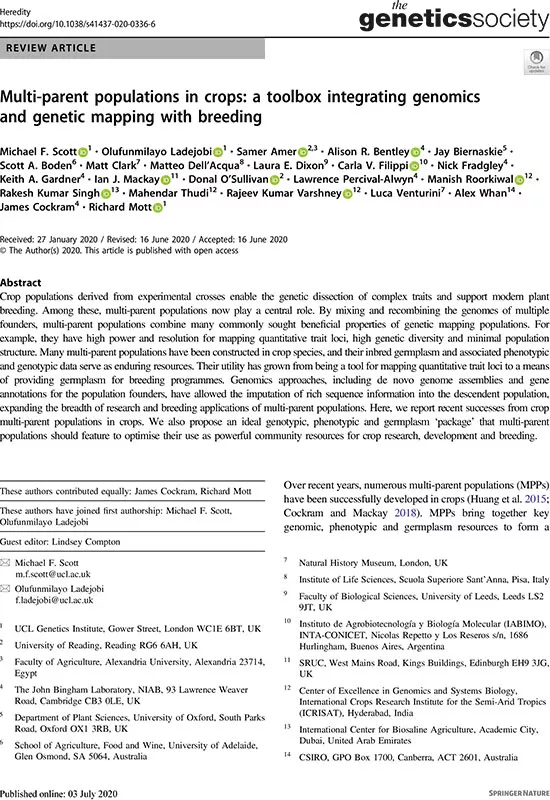Multi-parent populations in crops: a toolbox integrating genomics and genetic mapping with breeding
Crop populations derived from experimental crosses enable the genetic dissection of complex traits and support modern plant breeding. Among these, multi-parent populations now play a central role. By mixing and recombining the genomes of multiple founders, multi-parent populations combine many commonly sought beneficial properties of genetic mapping populations. For example, they have high power and resolution for mapping quantitative trait loci, high genetic diversity and minimal population structure. Many multi-parent populations have been constructed in crop species, and their inbred germplasm and associated phenotypic and genotypic data serve as enduring resources. Their utility has grown from being a tool for mapping quantitative trait loci to a means of providing germplasm for breeding programmes. Genomics approaches, including de novo genome assemblies and gene annotations for the population founders, have allowed the imputation of rich sequence information into the descendent population, expanding the breadth of research and breeding applications of multi-parent populations. Here, we report recent successes from crop multi-parent populations in crops. We also propose an ideal genotypic, phenotypic and germplasm ‘package’ that multi-parent populations should feature to optimise their use as powerful community resources for crop research, development and breeding.
Year
2020
Publication Source
Heredity
Publication type
Scientific Paper









